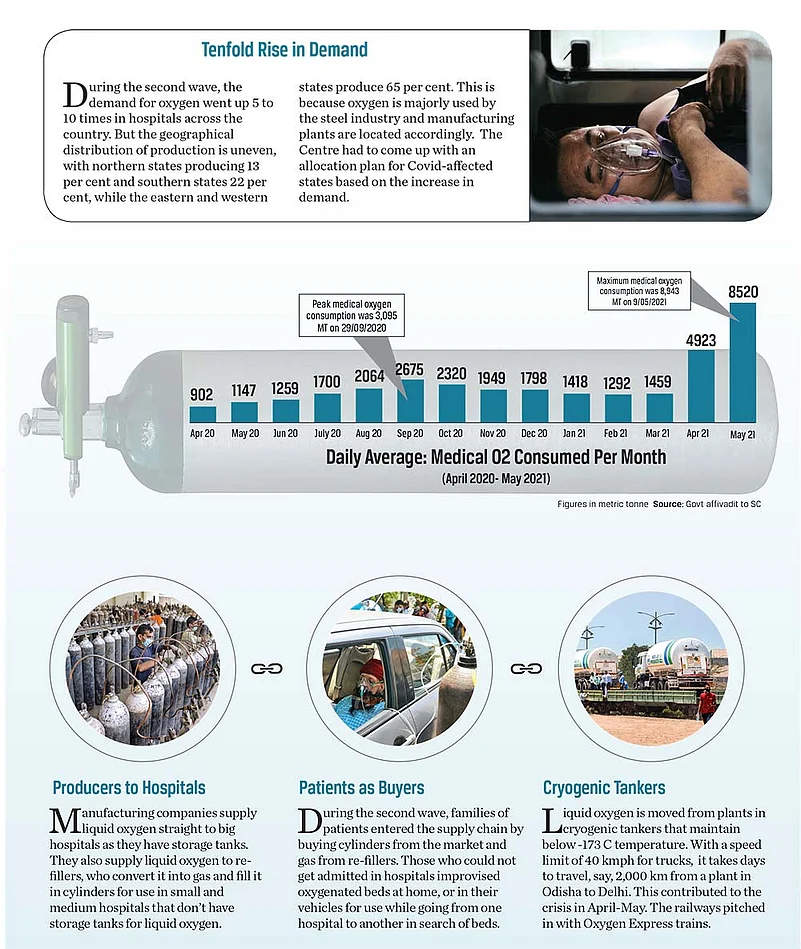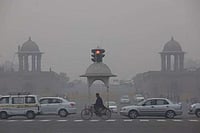April-May 2021: A record surge of Covid-19 swamps India. The second wave. People die in thousands, hundreds die because of a medical oxygen shortage. The government moves medical oxygen to hospitals by air, by train and by road, yet the shortfall can’t be met as the Covid caseload spikes and peaks. Meanwhile, a more infectious and dangerous variant of the coronavirus continues to strangle the infected. Here’s how—the virus enters a person’s respiratory tract through the mouth and nose. 1 It binds to cells in the throat, airways and lungs; hijacks the cell replication process and infects neighbouring cells. 2 Down the windpipe and through bronchial tubes in the lungs, the disease affects tiny air sacs called alveoli. Oxygen within these air sacs travels though small blood vessels called capillaries. It is then delivered to red blood cells. Covid damages and inflames the walls of the air sacs, reducing oxygen supply to the blood and leaving the patient gasping for breath. As the damage to capillaries and alveoli mounts, the delivery of oxygen to the blood reduces further. Patients with such lung failure or reduced lung function require medical oxygen blown into their lungs or directly into the blood by intubation. According to WHO, 19 per cent of critically ill patients or those suffering severe symptoms need oxygen.


ALSO READ
Graphics by Praveen Kumar. G


















.png?w=200&auto=format%2Ccompress&fit=max)



